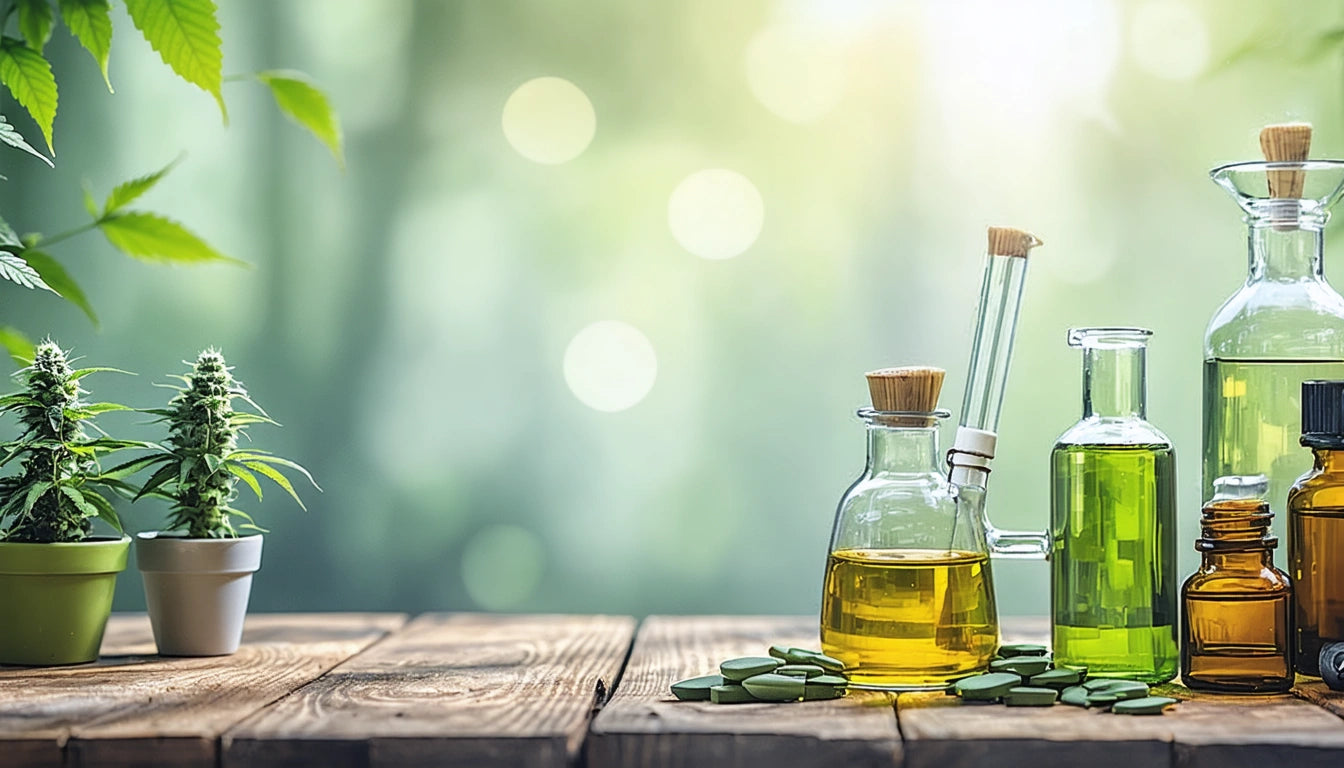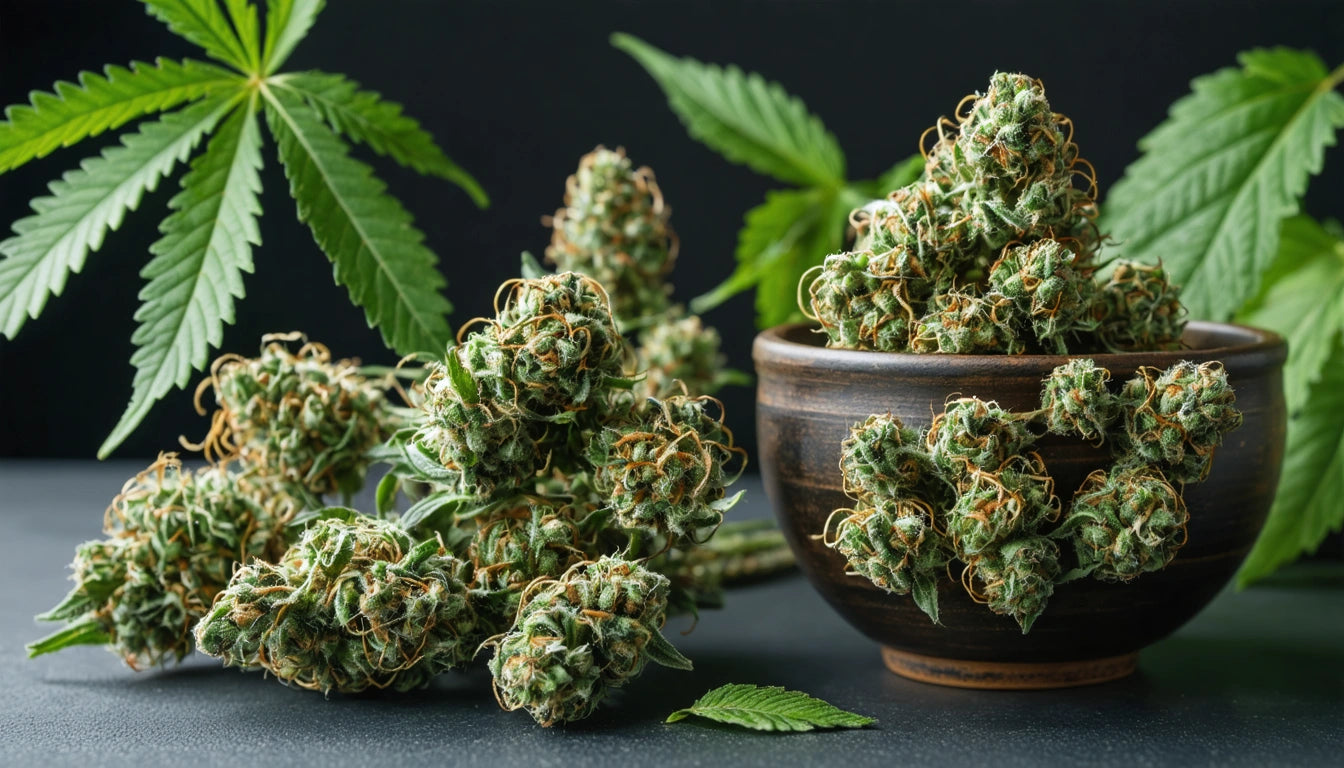Table of Contents
Step-by-Step Guide to Making CBN at Home
Cannabinol (CBN) has gained popularity for its potential sleep-enhancing and pain-relieving properties. Unlike CBD or THC, CBN isn't abundant in fresh cannabis but forms when THC ages and oxidizes. This guide walks you through the process of how to make CBN at home using accessible methods and equipment.
Understanding CBN: What It Is and Its Benefits
CBN (Cannabinol) is a non-intoxicating cannabinoid that develops naturally as THC degrades. While it doesn't produce the strong psychoactive effects of THC, it offers unique therapeutic benefits that many users seek. According to research on CBN effects, this cannabinoid shows promise for improving sleep quality, reducing inflammation, and potentially serving as an appetite stimulant.
Unlike other cannabinoids that require complex extraction processes, CBN can be created through simple oxidation and heat exposure of THC-containing cannabis. This makes it accessible for home production if you understand the basic principles and safety requirements.
Materials Needed for Making CBN
Before beginning your CBN production process, gather these essential materials:
- Cannabis flower with THC content (older cannabis works better as some conversion may have already occurred)
- Baking sheet or oven-safe glass dish
- Oven or heat source capable of maintaining consistent low temperatures
- Thermometer for monitoring temperature
- Airtight, child-resistant containers for storage
- Optional: Carrier oil (such as coconut oil) for making infusions
- Optional: Cheesecloth for straining
When storing your finished CBN products, proper safety containers with child-resistant features are essential to prevent accidental ingestion, especially if you're creating edible formulations or tinctures.
THC to CBN Conversion Methods
There are several methods to convert THC to CBN at home. Each has advantages and considerations:
Heat Method
The heat method accelerates the conversion of THC to CBN through controlled temperature exposure. This approach requires maintaining cannabis at approximately 230-240 °F (110-115 °C) for 1-2 hours. The heat breaks down THC's molecular structure, facilitating oxidation and conversion to CBN.
This method works well for creating CBN-infused oils, similar to the process described in this guide for cannabis-infused coconut oil, but with extended heating times to promote CBN conversion.
Oxidation Method
The oxidation method is the most natural approach, allowing THC to convert to CBN through exposure to oxygen over time. This process involves:
- Breaking up cannabis flower into small pieces
- Spreading it on a tray in a thin layer
- Exposing it to air in a dark, room-temperature environment
- Turning the material occasionally to ensure even oxidation
- Waiting 4-8 weeks for significant conversion
While slower, this method preserves more terpenes and creates a gentler end product.
UV Light Method
UV light accelerates THC degradation into CBN. This method involves exposing cannabis to UV light (such as sunlight or UV lamps) for several days to weeks. The UV radiation breaks down THC more quickly than natural aging alone.
Step-by-Step Process for Making CBN
Follow this detailed process to create CBN-rich material at home using the heat method:
- Prepare your cannabis: Grind your cannabis flower to increase surface area, but not too finely.
- Decarboxylate first: Heat cannabis at 240 °F (115 °C) for 40 minutes to convert THCA to THC.
- Extended heating: Continue heating at 230 °F (110 °C) for an additional 1-2 hours to convert THC to CBN.
- Optional infusion: Combine with a carrier oil and heat at low temperature (200 °F/93 °C) for 2-3 hours to create a CBN-infused oil, similar to methods described in cannabis oil preparation guides.
- Strain and store: If making an infusion, strain through cheesecloth and store in an airtight, light-resistant container.
For the oxidation method, simply store decarboxylated cannabis in a dark place with some airflow for several weeks, checking periodically for the development of a darker color and more sedative effects.
Safety Precautions and Storage Requirements
When making CBN at home, safety should be your top priority:
- Work in a well-ventilated area to avoid inhaling excessive vapors
- Keep temperatures precisely controlled to prevent combustion
- Store all cannabis products in child-resistant packaging
- Label all containers clearly with contents and date of production
- Keep all materials away from pets and children
For storage, CBN products should be kept in airtight, opaque containers away from heat, light, and moisture. Properly stored CBN preparations can maintain potency for 6-12 months.
Practical Applications and Usage Guidelines
Once you've successfully created CBN-rich material, there are several ways to use it:
- Sublingual tinctures: Dissolve in alcohol or glycerin for fast-acting effects
- Edible preparations: Add to foods following guidelines similar to those in comprehensive cannabis infusion guides
- Topical applications: Mix with creams or salves for localized relief
- Capsules: Fill vegetable capsules with CBN-infused oil for precise dosing
Start with low doses (5-10mg) to assess your sensitivity to CBN, especially when using homemade preparations where potency may vary. Unlike THC, CBN typically doesn't cause significant intoxication, but it can produce strong sedative effects that may be more powerful than expected.
For those interested in comparing CBN with other cannabinoids, this comparison of CBG, CBN, and CBGA provides valuable insights into how different cannabinoids interact with the body's endocannabinoid system.
By following these guidelines, you can successfully create CBN at home for personal use, harnessing the unique properties of this beneficial cannabinoid while maintaining safety standards throughout the process.











Leave a comment
All comments are moderated before being published.
This site is protected by hCaptcha and the hCaptcha Privacy Policy and Terms of Service apply.